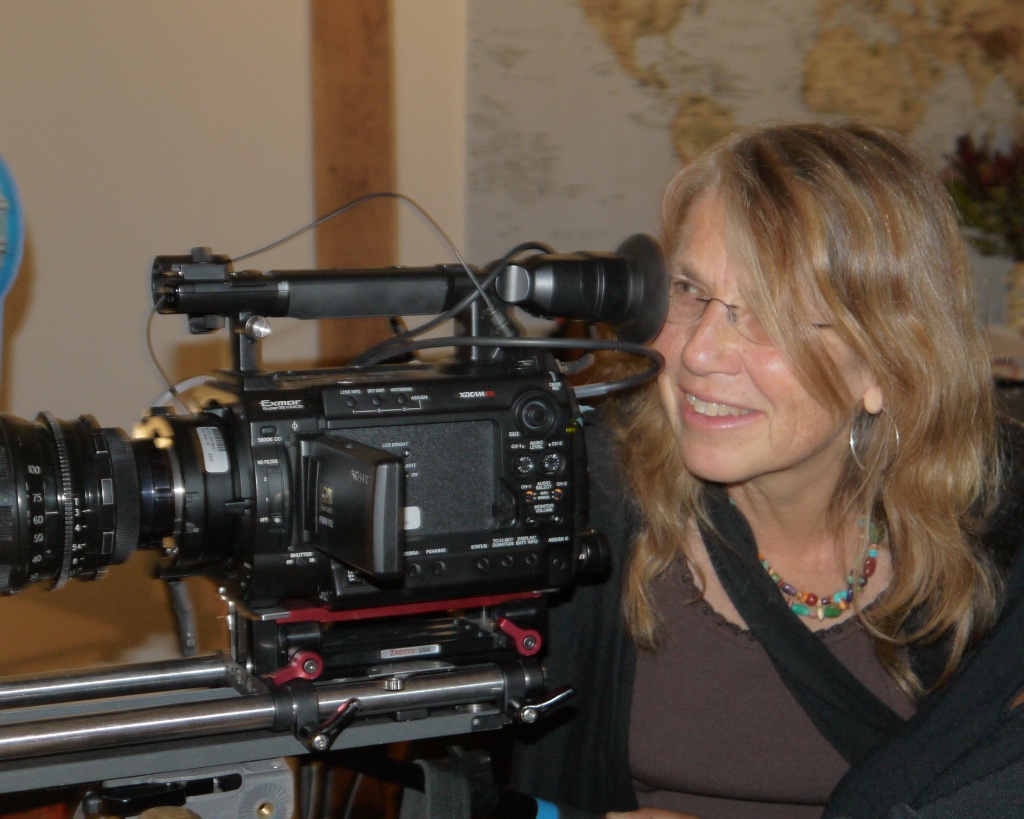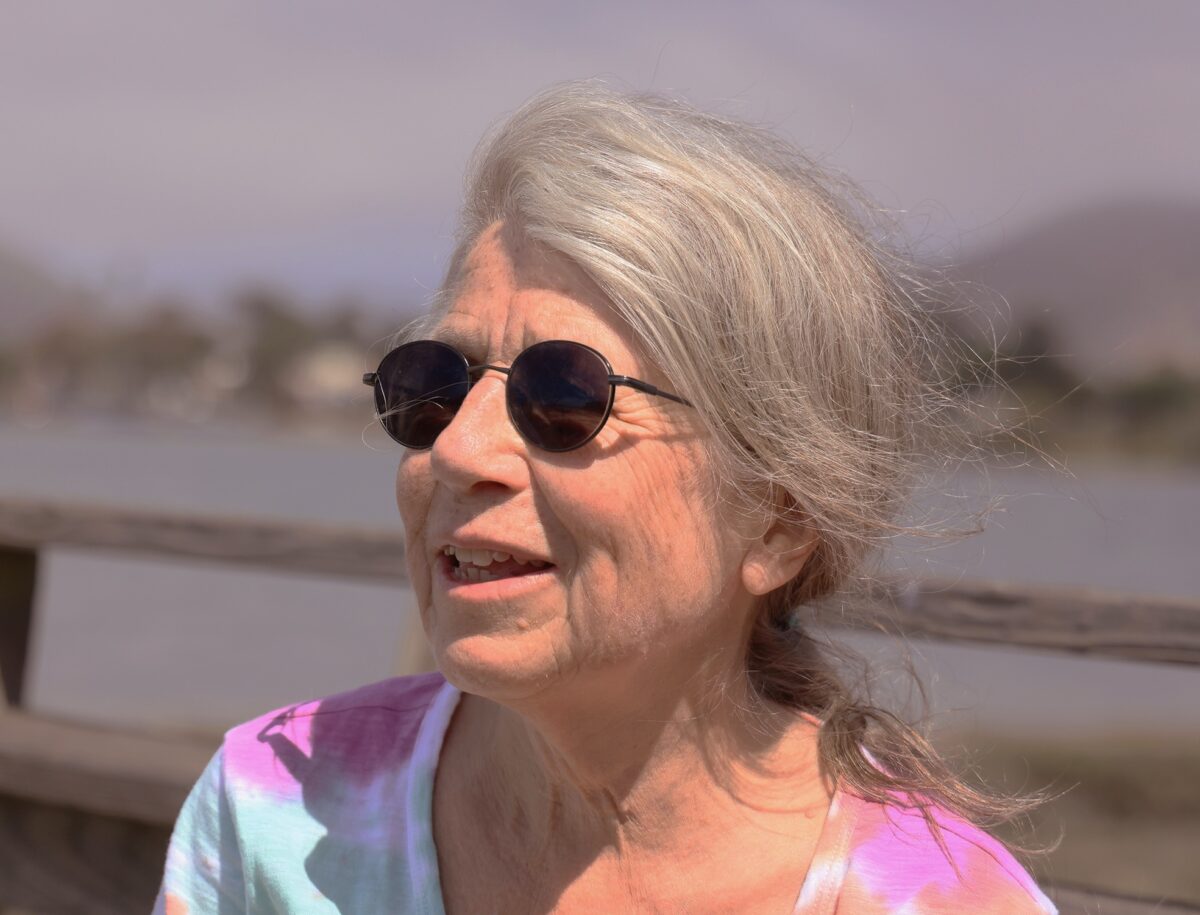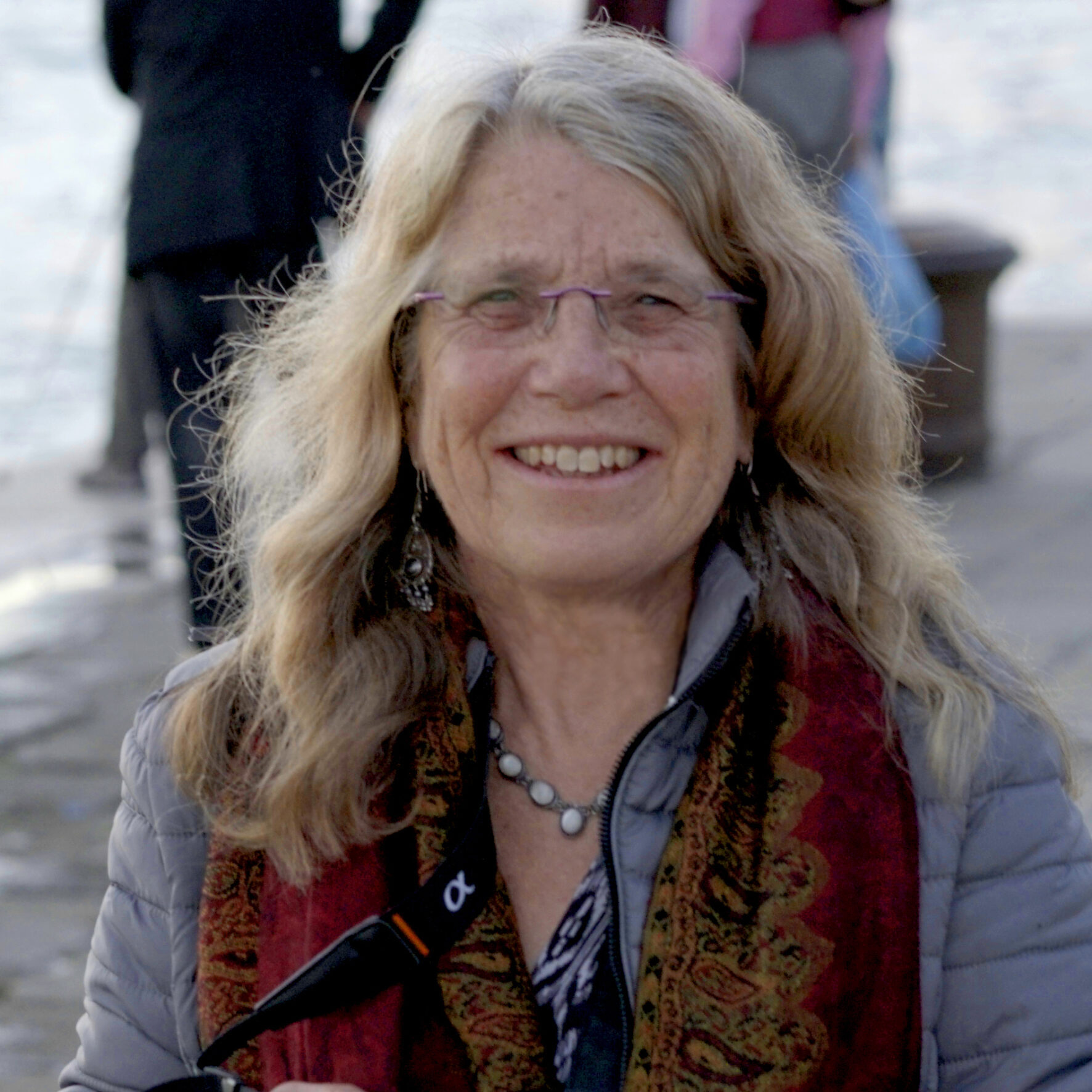Telling a good (Pando Days) story
Pando Days Creative Producer Lyn Goldfarb shares her thoughts on what a good Pando Days story looks like and how to tell it. An Academy Award nominee in documentary filmmaking with two Emmys and a Peabody, Lyn offers advice from a lifetime of storytelling experience.
PANDO: Hi, Lyn! Pando Days projects are powering their way forward this fall toward premiere presentations in early December. They’ll all be wanting to put their best foot forward and tell a great story about the work they’re doing to help implement LA County’s sustainability goals. What advice do you have?
LYN: The Pando projects are incredibly ambitious in their design and scope. And they’re all different, which is great. I really applaud the professors and students for their vision and their expectations. But for the presentation, sometimes less is more.
I always tell Pando Days instructors and students, You are in control of defining what your project is. It’s better to create a more defined project that showcases the work rather than trying to get everything in.
A strong presentation is a strong story: accessible, understandable, approachable and visual, with people wanting more.
When people hear the word “story,” it’s easy to immediately think of fiction. But you’ve made a career in non-fiction. Are the rules the same – and, in fact, what are the rules if you wanted to spell them out in terms that might help the Pando Days teams?
A good story has a beginning, middle and end, whether it’s a fiction story or a non-fiction documentary. I also believe this story structure is also applicable to Pando Days projects.
Let’s break it down, then. What should the beginning highlight?
The beginning is a statement of the problem you are trying to address. As an audience, we need to understand what it is. While you may utilize data and charts, it is helpful to use other visuals, where possible — photos, footage, drawings. Today, there are so many options. Students can take photos or footage illustrating the problem, or you can easily download visuals from online sources.
And, the middle?
The middle is the essence of the story. In Pando’s case, it is the project. How are you going to address and tackle the problem? What is the scope of your project, what do you hope to accomplish, and how will you do it? You also can talk about the process, the steps you are taking. And if helpful, the obstacles you faced and overcame. I would urge that the teams consider visuals at this time as well.
You talk about the “essence” of the project. Finding it is sometimes a lot easier said than done…
It is! This is often the most difficult part, for any storyteller – professional or not. You can see all the possibilities but then you are faced with reality.
And, what is that reality?
We are aware that it can be difficult to do a 15 minute presentation about the complexities of a real-world project.
And these projects need to be accomplished or at least significantly underway in one semester. Teams that are overwhelmed with good ideas will likely have to narrow expectations and focus on concrete deliverables that can get accomplished within the time frame.
Because Pando Days projects are meant to live on once the class is over, we allow additional elements to be added to project webpages after premiere presentations.
Speaking of, what advice do you have about the end, the conclusion of the story?
It’s important to remember that the end of any story is the conclusion of the story you set out to tell. It sounds obvious but if you don’t remember this, your story will have just stopped, not wrapped up and ended.
You could also frame your conclusion as a proof of concept. And you definitely need to tell us the next steps.
You may want support for moving your project ahead – perhaps from an institutional or community partner, from volunteers, a funder, and more. If so, you should be prepared for people to ask you about the support you need, and you’ll want to be able to answer the question about what would you like to do next.
In one semester, you’re not going to be able to save the world.
Exactly. But through your projects,you are doing incredible work towards meeting the Southland’s sustainability goals.
So people will want to clearly know, what did you accomplish? Do we see it explained in prototypes or drawings, maps or something physical?
Crucially, what are the next steps? Is this a project that another class or club or community partner or individual will take on – and have you developed community connections or involved stakeholders who can help make this happen? Are you or are any of your students motivated to continue the work? How can Pando help?


Back on the storytelling front, filmmakers often talk about “finding the story” – and that it’s hard sometimes to actually do.
When I first have an idea for a film, I do the research so I know the landscape I am exploring and why I am committed to this subject. But it doesn’t mean I have found the story.
Continued research, spending time with the subject, understanding the environment that the subjects live in, conducting interviews and realizing what people are actually saying — this is the foundation of storytelling.
“Finding the story” takes time… but given that Pando Days teams only have a semester to find their story, how do you break this down into smaller elements?
There are many interpretations of the basic blocks of storytelling, but I believe these five are applicable to Pando projects: Characters, Setting, Plot, Conflict, and Resolution.
Characters can be people, wildlife, plants or the environment.
Setting is the location or environment, whether now or in the future
Plot is the problem or concern you are trying to address, including background and specifics of how you will tell the story.
Conflict articulates the obstacles you face, whether environmental, political, internal or financial;
Resolution is the realization of your goals, vision and what you are able to accomplish.
But there are additional elements that should be considered such as stakeholders, partners and community involvement – and because these are ongoing problems and concerns, an expression of what comes next.
So, what kind of materials do you need to flesh a story out? Is there something like a check-list you keep in the back of your mind?
Visuals, visuals, visuals. Before and after images which will provide the context of where the project takes place. Materials which help engage and excite the audience. And, I also think it’s important to personalize the story as much as possible.
How might a Pando Days team personalize the story it’s telling?
Don’t be afraid to get up close, to ask questions – and to be vulnerable yourself.
Pando Days teams are filled with students who are learning new ideas and are passionate, with instructors who are pouring their life’s work into this effort and making it happen, and with community partners who are hoping for grassroots impact. It’s an incredible mix with great storytelling potential. Who are they and why are they involved – including their goals and expectations?
You’ve now visited with all the projects and met many of the students. What advice have you given that might be applicable to everyone working on a Pando Days project this year?
First off, I am very impressed with the team projects I have visited. And I hope I was able to provide a useful perspective.
Probably the most important advice is to be clear about what you are able to accomplish by the time of the December premieres, and to realize that visual images of the work will be critically important to your audience understanding the project.
Sometimes, we don’t think about this until the end, but before and after pictures, as well as images of the locations, help clarify the problem that you are trying to address. These visuals can often provide a better understanding of the maps or renderings many will be providing.
So, now you have the thread of a story, and you have all this visual stuff – but you still have to put it all together. Any words of wisdom in putting a presentation together?
I believe the same storytelling principles apply whether it’s a powerpoint presentation, slide show or a video.
Earlier, I had talked about a beginning, middle and end, but in a story, it doesn’t have to be chronological. A story can also start with the most dramatic part and then tell the story through backstory. Some Pando Days projects do this very effectively.
And remember not to lose focus – or let your audience lose focus – on what this is really about. Pando Days is about making a concrete difference in Southern California in advancing sustainability goals and putting forth solutions for our communities to be more hopeful, more creative, and more sustainable.
Thank you for the work you are doing.
This post was updated on November 27, 2023.
